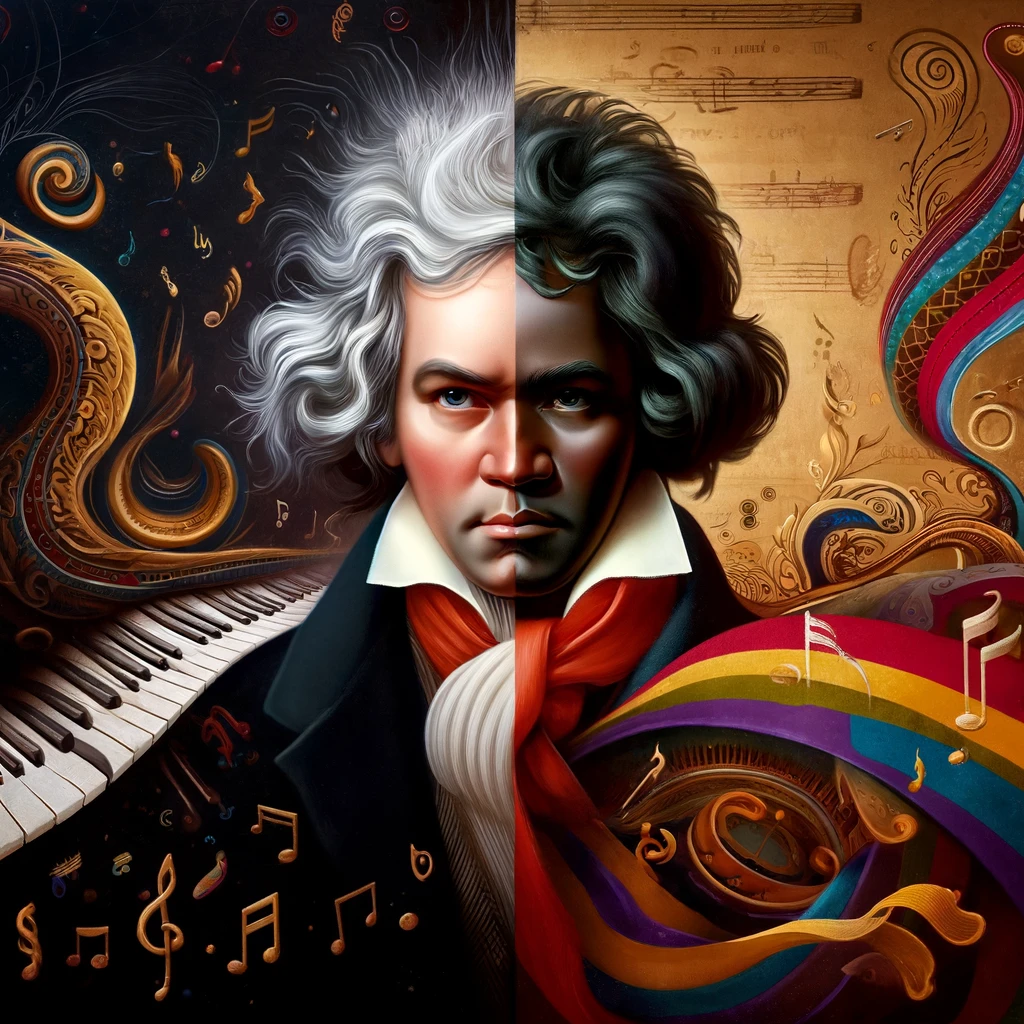
Beethoven’s Ancestry: Myth vs. Reality
Ludwig van Beethoven, a name synonymous with musical genius, has been the subject of an intriguing debate: Did he have African ancestry? This question has sparked discussions and theories but, more importantly, it prompts a deeper examination of race, genius, and history.
The Genesis of the Theory
The notion that Beethoven might have been black can be traced back to the early 20th century. This theory gained traction among some scholars and activists who sought to highlight the contributions of people of African descent in Western culture. Proponents of this theory often point to anecdotal observations of Beethoven’s dark complexion and his friendships with people of African descent, such as the violinist George Bridgetower. These observations, however, are based more on personal accounts and interpretations rather than solid genealogical evidence.
Scrutinizing the Evidence
In terms of physical appearance, historical descriptions vary, with some contemporaries noting Beethoven’s “swarthy” complexion. This led to speculative assertions that his darker skin tone might indicate African ancestry. Moreover, a comment by a Hungarian prince who referred to Beethoven and his contemporaries as “Moors” added to the speculation, although such terms were loosely used in the period to describe darker Europeans and did not necessarily denote African descent.
Beethoven’s known lineage, however, suggests Flemish roots, with both his parents, Johann and Maria Magdalena van Beethoven, hailing from the Flemish region. Detailed genealogical records up to several generations back show a clear European ancestry without any direct links to African roots.
Musical Clues and Misinterpretations
Some advocates of the theory have attempted to link Beethoven’s music to African musical traditions, pointing to the use of polyrhythms as indicative of African influence. However, this connection remains speculative and is not widely supported by music historians. The musical styles and techniques employed by Beethoven are consistent with the broader traditions of Western classical music of his time.
The Bigger Picture
The question of Beethoven’s race might actually detract from more substantive issues within the classical music world. Critics argue that focusing on Beethoven’s potential African ancestry overlooks the more pressing need to recognize and celebrate actual Black composers and musicians who have historically been marginalized. Figures like George Bridgetower, William Grant Still, and Florence Price made significant contributions to music and represent the true legacy of Black achievement in the classical music realm.
While it is an intriguing possibility to consider, the overwhelming consensus among historians and musicologists based on available evidence is that Beethoven was not of African descent. More importantly, the focus on this question may overshadow the need to address the underrepresentation and acknowledgment of genuine Black composers and musicians in classical music history. This debate serves as a reminder of the complexities of racial identity and the importance of inclusivity in cultural historiography.

Cultural Context and Historical Insights
While the debates about Beethoven’s racial origins have captured public imagination, they also reflect deeper societal issues regarding race and recognition. This ongoing discourse highlights the significant impact that historical narratives have on our understanding of cultural identity and contribution.
The Role of Culture in Perpetuating Myths
The interest in Beethoven’s racial background also demonstrates how cultural figures are often recast in different lights depending on prevailing societal narratives. For instance, the need to claim a figure of Beethoven’s stature for different racial identities speaks to a broader struggle for representation and acknowledgment within historical and cultural contexts.
Historical Misinterpretations and Conclusions
It’s crucial to recognize the limitations of historical evidence when discussing Beethoven’s ancestry. While genetic evidence is inconclusive for individuals from the 18th century, much of the argument around Beethoven’s race is based on second-hand descriptions and interpretations that were susceptible to the biases and norms of that era.
The descriptions of Beethoven’s complexion and the references to him possibly being a “Moor” need to be understood in the context of 18th and 19th-century European racial categories, which do not correspond neatly with modern understandings of race. Historically, terms like “Moor” were used in various and sometimes contradictory ways, often reflecting more about the speaker’s perceptions and the social attitudes of the time than about the subject’s actual racial background.
Shift in Focus: Celebrating Diversity in Classical Music
Rather than dwelling on speculative aspects of Beethoven’s heritage, it is perhaps more productive to focus on the undeniable diversity and richness that different cultures have contributed to classical music. Celebrating composers of African descent, such as George Bridgetower, and recognizing their contributions offers a more constructive way to engage with the history of classical music.
Bridging Past and Present
Understanding Beethoven’s life and music through the lens of modern racial categories can be anachronistic. Instead, appreciating his work and the work of his contemporaries within their historical contexts allows for a richer appreciation of classical music’s diverse influences.
Conclusion
In conclusion, while the discussion around Beethoven’s racial background is fascinating, it should not overshadow the broader issues of recognition and representation in classical music. Focusing on the contributions of historically marginalized groups within this genre can help correct historical oversights and enrich the narrative of classical music history.
This expanded perspective not only enriches our understanding of the past but also informs current discussions about diversity and inclusion in the arts. It invites a more nuanced appreciation of how historical figures are remembered and celebrated, ensuring a more inclusive approach to cultural history.